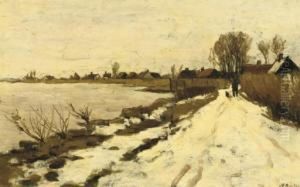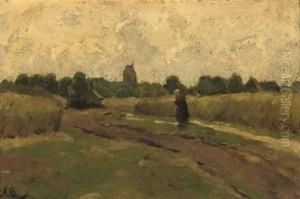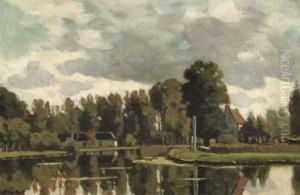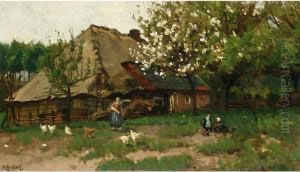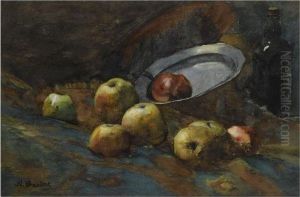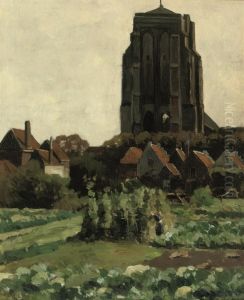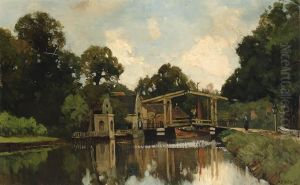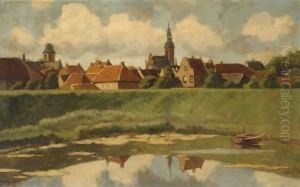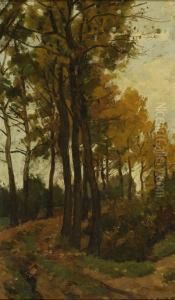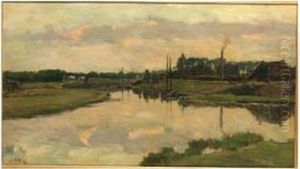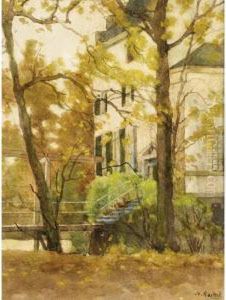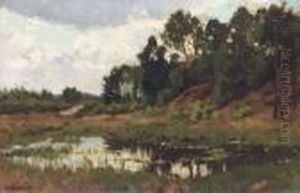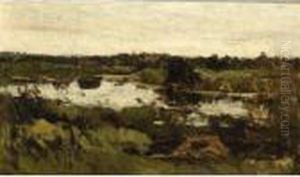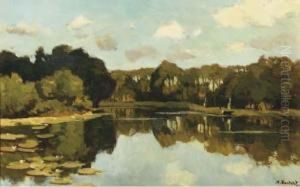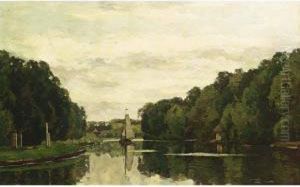Nicolaas Bastert Paintings
Nicolaas Bastert, born on September 30, 1854, in Maarssen, the Netherlands, was a prominent Dutch landscape painter whose work was part of the impressionist movement. He is known for his atmospheric renderings of the Dutch countryside, particularly his focus on the rivers and waterways that characterize the landscape of the Netherlands.
Bastert began his artistic studies at the Academy of Fine Arts in The Hague, where he was influenced by the Hague School of painters, a group known for their realist approaches to depicting the Dutch landscape. However, Bastert's style evolved to incorporate impressionist techniques, characterized by loose brushwork and a vibrant color palette, which distinguished his work from the more subdued tones of the Hague School.
The artist spent much of his life traveling around the Netherlands, seeking inspiration from the changing light and seasons that affected the appearance of the water and rural environments. He frequently painted the river Vecht, near his hometown, capturing its tranquil beauty in various conditions. Bastert was adept at portraying the reflections and the play of light on the water’s surface, a hallmark of his technique.
Throughout his career, Nicolaas Bastert exhibited his works widely, both in the Netherlands and abroad. His paintings were well received, and he became a respected figure in the Dutch art community. In addition to his landscape paintings, Bastert also produced a number of townscapes and winter scenes, which further demonstrated his versatility and skill as an artist.
Bastert continued to paint until his later years, capturing the essence of the Dutch landscape with a poetic sensibility that has made his work enduringly popular. He passed away on July 18, 1939, in Loenen aan de Vecht. Today, his paintings can be found in various Dutch museums, and his contribution to Dutch impressionism is celebrated for its unique vision and masterful execution.









